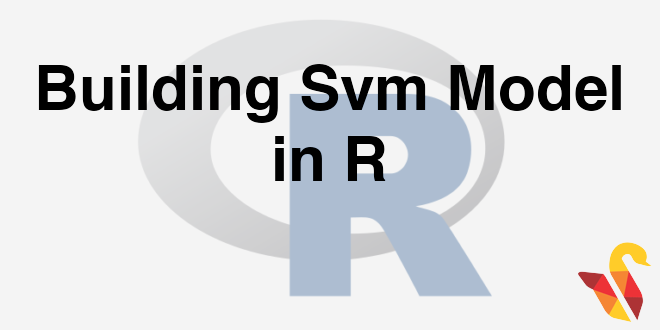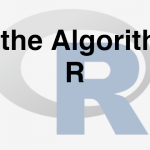
We discussed the SVM algorithm in our last post. In this post we will try to build a SVM classification model in R.
LAB: First SVM Learning Problem
- Dataset: Fraud Transaction/Transactions_sample.csv
- Draw a classification graph that shows all the classes
- Build a SVM classifier
- Draw the classifier on the data plots
- Predict the (Fraud vs not-Fraud) class for the data points Total_Amount=11000, Tr_Count_week=15 & Total_Amount=2000, Tr_Count_week=4
- Download the complete Dataset: Fraud Transaction/Transaction.csv
- Draw a classification graph that shows all the classes
- Build a SVM classifier
- Draw the classifier on the data plots
Solution
#SVM Building needs e1071 package
library(e1071)
#Converting the output into factor, otherwise SVM will fit a regression model
Transactions_sample$Fraud_id<-factor(Transactions_sample$Fraud_id)
head(Transactions_sample)## id Total_Amount Tr_Count_week Fraud_id
## 1 16078 7294.60 4.79 0
## 2 41365 7659.53 2.45 0
## 3 11666 8259.29 10.77 0
## 4 11824 11630.25 15.29 1
## 5 36414 12286.63 22.18 1
## 6 90 12783.34 16.34 1#SVM Model building
svm_model <- svm(Fraud_id~Total_Amount+Tr_Count_week, data=Transactions_sample)
summary(svm_model)##
## Call:
## svm(formula = Fraud_id ~ Total_Amount + Tr_Count_week, data = Transactions_sample)
##
##
## Parameters:
## SVM-Type: C-classification
## SVM-Kernel: radial
## cost: 1
## gamma: 0.5
##
## Number of Support Vectors: 12
##
## ( 6 6 )
##
##
## Number of Classes: 2
##
## Levels:
## 0 1#Plotting SVM Clasification graph o the data
ggplot(Transactions_sample)+geom_point(aes(x=Total_Amount,y=Tr_Count_week,color=factor(Fraud_id),shape=factor(Fraud_id)),size=5)#Data With SVM model
plot(svm_model, Transactions_sample,Tr_Count_week~Total_Amount ) #x2~x1#Prediction in SVM
new_data1<-data.frame(Total_Amount=11000, Tr_Count_week=15)
p1<-predict(svm_model, new_data1)
p1## 1
## 1
## Levels: 0 1new_data2<-data.frame(Total_Amount=2000, Tr_Count_week=4)
p2<-predict(svm_model, new_data2)
p2## 1
## 0
## Levels: 0 1#SVM on overall data
Transactions<- read.csv("C:\\Amrita\\Datavedi\\Fraud Transaction\\Transaction.csv")
dim(Transactions)## [1] 45000 4#Converting the output into factor, otherwise SVM will fit a regression model
svm_model_1 <- svm(Fraud_id~Total_Amount+Tr_Count_week, type="C", data=Transactions)
summary(svm_model_1)##
## Call:
## svm(formula = Fraud_id ~ Total_Amount + Tr_Count_week, data = Transactions,
## type = "C")
##
##
## Parameters:
## SVM-Type: C-classification
## SVM-Kernel: radial
## cost: 1
## gamma: 0.5
##
## Number of Support Vectors: 44
##
## ( 21 23 )
##
##
## Number of Classes: 2
##
## Levels:
## 0 1#Plotting SVM Clasification graph
plot(svm_model_1, Transactions,Tr_Count_week~Total_Amount )
The next post is about the Non-linear Decision Boundary.




